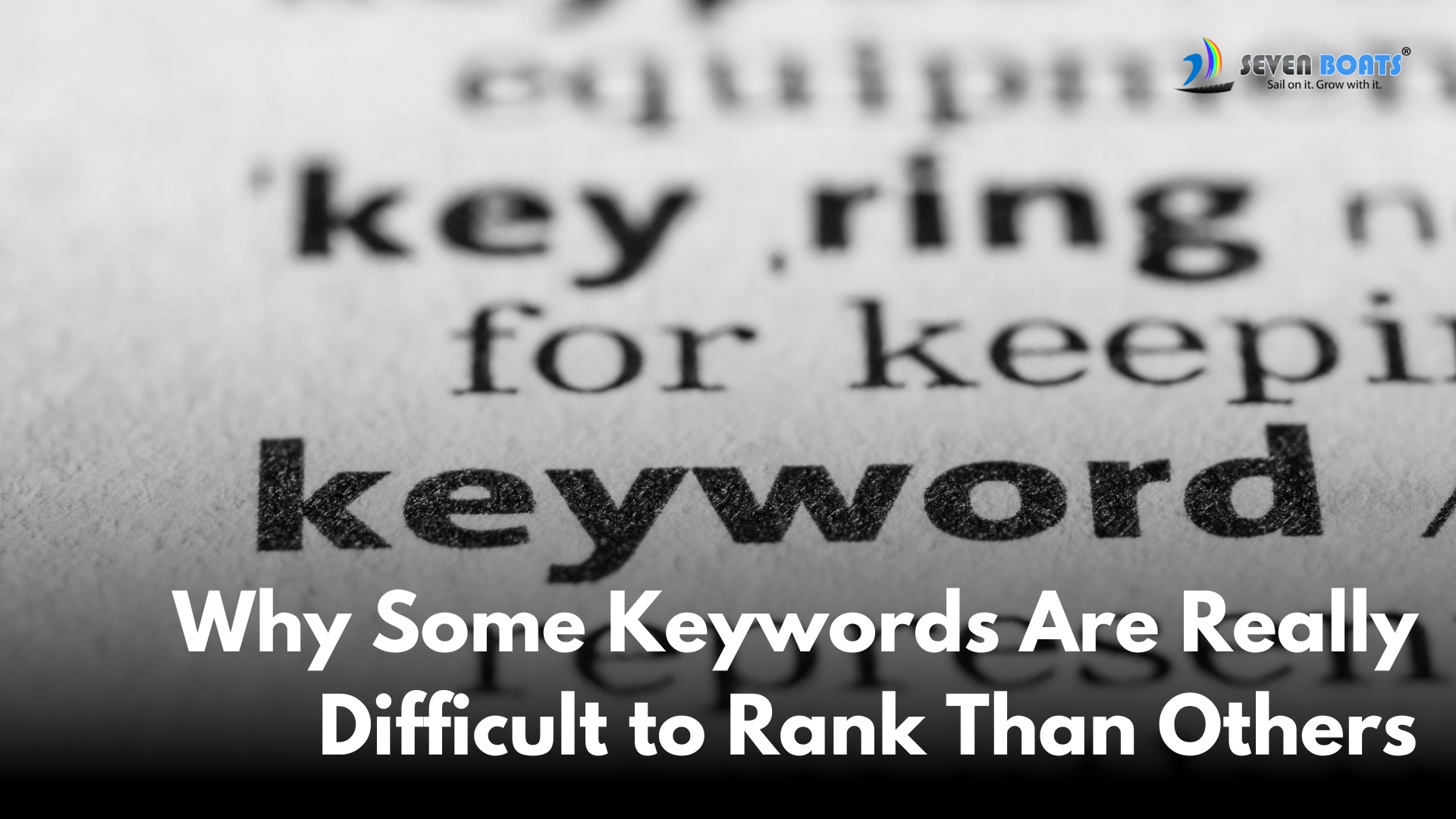When it comes to digital marketing and search engine optimization (SEO), one of the trickiest challenges for businesses is figuring out why some keywords are much harder to rank for compared to others. Keywords are the foundation of SEO strategies, yet not all keywords behave the same way. Some rise easily to the top of search engine result pages (SERPs), while others stubbornly stay below competitors despite similar efforts. Understanding the factors behind this phenomenon can help marketers and business owners make smarter choices for their SEO campaigns.
Search Volume and Popularity
High search volume keywords are inherently harder to rank for because of the sheer number of people targeting them. Keywords like “best laptops” or “cheap flights” are searched millions of times a month, making them extremely attractive. This leads to intense competition, especially from large companies with substantial SEO budgets. On the other hand, niche or long-tail keywords with lower search volumes often face less competition. For example, “affordable laptops for students in India” may have fewer monthly searches, but it is easier to rank for because fewer websites are optimized for that exact phrase.
Competition Levels
One major factor that determines keyword difficulty is the number and quality of competitors targeting the same keyword. If your competitors have well-established websites with high domain authority, ranking for a shared keyword becomes more challenging. For instance, keywords related to popular products like “iPhone reviews” or trending topics like “AI tools for business” often see established industry leaders, media outlets, and big e-commerce platforms dominating the SERPs. Competing against such players requires not just optimized content but also strong backlinks, technical SEO, and significant time investment.
Relevance to User Intent
Understanding user intent is crucial for keyword selection, and misjudging it can make a keyword harder to rank for. Search engines prioritize content that best aligns with what users are looking for, whether it’s informational, transactional, or navigational. For example, if you’re targeting a keyword like “how to start a blog,” but your content is focused on selling blogging software, search engines will deprioritize your page in favor of guides or tutorials. Matching the intent of a keyword is essential, and failing to do so can make ranking for it almost impossible, no matter how much effort you put into optimization.
Domain Authority and Trust
Domain authority (DA) plays a critical role in keyword rankings. Established websites that have been active for years and have gained trust through high-quality content, backlinks, and user engagement have a significant advantage. Newer or smaller websites with lower DA often struggle to rank for competitive keywords. For example, if you’re trying to rank for “best credit cards,” you’ll likely be competing with financial giants like banks and large review platforms. Building DA is a long-term process, requiring consistent content production, backlink acquisition, and user engagement.
Keyword Length and Specificity
Short-tail keywords, often just one or two words long, are much harder to rank for compared to long-tail keywords. For instance, a keyword like “shoes” is generic and highly competitive, whereas a more specific term like “best running shoes for flat feet” is longer and caters to a narrower audience. While short-tail keywords attract high traffic, they’re also targeted by a broader range of businesses, making them highly competitive. Long-tail keywords may not bring in as much traffic, but they have higher conversion rates and lower competition, making them a more strategic choice for many businesses.
Search Engine Algorithm Changes
Google and other search engines continuously update their algorithms to deliver better results to users. These updates can affect keyword difficulty in unexpected ways. For example, Google’s emphasis on E-A-T (Expertise, Authority, Trustworthiness) has made it harder for low-authority sites to rank for competitive keywords, especially in niches like health, finance, and law. Additionally, the increasing importance of user experience, mobile-friendliness, and page speed in rankings adds another layer of complexity to already competitive keywords.
Backlink Profile Requirements
Competitive keywords often require a robust backlink profile to rank effectively. Backlinks from authoritative and relevant websites signal to search engines that your content is trustworthy and valuable. However, acquiring high-quality backlinks is neither easy nor quick. For instance, a keyword like “SEO tips” might require hundreds or even thousands of backlinks from credible sources to break into the top rankings. Conversely, less competitive keywords can often rank with fewer backlinks, provided the content quality is high and user intent is addressed.
Content Saturation
The amount of content already available for a keyword significantly influences how difficult it is to rank. For highly competitive keywords, there may already be thousands of well-optimized articles, videos, and other resources available. Standing out in such a saturated environment requires exceptional content that offers unique value. For example, if you’re targeting “workout plans for beginners,” you’ll need to go beyond basic advice and provide something innovative, such as interactive tools, in-depth videos, or expert interviews.
Geographic and Local Considerations
Keywords that are globally competitive can still be easier to rank for in specific geographic locations. For instance, a keyword like “plumbing services” may be highly competitive in major cities but less so in smaller towns or regions. Local SEO strategies, such as optimizing for “plumbers in [city name]” and claiming your Google My Business profile, can significantly improve your chances of ranking in specific areas. However, even within local SEO, competition can vary widely depending on the market.
User Behavior and Trends
User behavior changes over time, and keywords that were once easy to rank for can become more competitive as trends shift. For example, keywords related to emerging technologies like blockchain or AI can initially be low-competition but become highly competitive as more businesses and content creators enter the space. Similarly, seasonal or event-driven keywords, such as “Black Friday deals,” experience spikes in competition during specific periods, making them harder to rank for during those times.
The Role of Paid Ads
For highly competitive keywords, search engines often display several paid ads at the top of the SERPs. This pushes organic results further down the page, making it harder to attract clicks even if you achieve a high ranking. For instance, a keyword like “insurance quotes” is dominated by paid ads, leaving little room for organic results to capture user attention. Competing in such an environment requires not just SEO but also a strong understanding of pay-per-click (PPC) strategies.
Emerging Content Types
Search engines increasingly favor diverse content types, such as videos, infographics, and voice search results. Keywords that align with these content formats can be harder to rank for if your content strategy is limited to traditional blog posts. For example, a keyword like “how to tie a tie” might be easier to rank for with a video tutorial than with a text-based article. Adapting to these shifts in content preferences is crucial for competing effectively in modern SEO.
Misalignment of Resources
One reason some keywords feel more difficult to rank for is a lack of sufficient resources. Competitive keywords often require not just high-quality content but also significant investments in technical SEO, content promotion, and ongoing optimization. For smaller businesses or individual creators, targeting high-competition keywords may simply be beyond their current capabilities. Recognizing these limitations and focusing on achievable goals is a critical step in any effective SEO strategy.
Conclusion
The difficulty of ranking for specific keywords comes down to a mix of factors, including competition, search volume, user intent, and search engine algorithms. While competitive keywords may promise high rewards, they often require substantial time, effort, and resources to achieve top rankings. Focusing on long-tail keywords, niche markets, and providing exceptional value can offer a more strategic path for many businesses. By understanding these dynamics, you can make more informed decisions and design an SEO strategy that aligns with your goals and capabilities.








Great article! You’ve explained why some keywords are tougher to rank in a very clear and engaging way. I found the tips on targeting low-competition keywords especially useful. Keep up the good work.
Good article
Hi [Debajyoti Banerjee],
I just finished reading your article, “Why Some Keywords Are Really Difficult to Rank Than Others,” and I wanted to commend you on the depth of analysis and the clarity with which you explained the challenges of ranking for competitive keywords. I particularly liked how you touched on aspects like search intent, SERP features, and the role of content quality in ranking success. These factors are often overlooked but are crucial in any SEO strategy.
I wanted to share a related resource from my website that dives deeper into long-tail keyword strategies and how they can help marketers overcome some of the challenges you’ve mentioned in your article. We’ve had great success ranking for niche, long-tail keywords by focusing on user intent and crafting highly-targeted content. I believe your readers might find it valuable as a follow-up to your points on search intent and backlink strategies.
If you think it aligns with the topics you’ve discussed, I’d love to have you consider linking to it in your article. It would add additional depth for your audience, and I’d be happy to share your article with our network as well.
Looking forward to hearing your thoughts!
Hi Deepan,
Great article! Your breakdown of why certain keywords are tougher to rank for is spot on. I particularly appreciated your insights on the impact of search volume and competition levels. It’s a solid reminder that while high-volume keywords seem attractive, they often come with fierce competition from established players. Your point about aligning content with user intent also resonated with me; it’s crucial to match content to what users are genuinely seeking to improve ranking chances.
I also found your discussion on domain authority enlightening. It’s easy to overlook how much weight search engines place on a site’s credibility. Your advice to focus on long-tail keywords and build domain authority over time is practical and actionable. Thanks for sharing these insights; they’ve given me a fresh perspective on refining my SEO strategies.
A great reminder that high competition and search intent are in ranking challenges. Focus on long-tail keywords and niche-specific phrases for better results. Nice!
I’ve worked on several performance marketing campaigns, and the precision in targeting is unmatched. It’s amazing how real-time analytics allow for quick optimizations. What platforms do you find most effective for cost-per-sale campaigns?
Thank you for sharing this wonderful article. It was very insightful and knowledgeable
I also found your discussion on domain authority enlightening. It’s easy to overlook how much weight search engines place on a site’s credibility. Your advice to focus on long-tail keywords and build domain authority over time is practical and actionable. Thanks for sharing these insights; they’ve given me a fresh perspective on refining my SEO strategies.
Your content is very helpful. It is relevant to the time. Thank you for Sharing this Content.
Hey Deepan!
I just finished reading your article on why some keywords are more difficult to rank than others, and I have to say, it was incredibly insightful. Your breakdown of factors like search volume, competition levels, and domain authority really clarified the complexities behind keyword ranking. I particularly appreciated your emphasis on understanding user intent—it’s a crucial aspect that often gets overlooked. As someone who’s been dabbling in SEO, your point about aligning content with what users are actually searching for resonated with me. It’s a reminder that it’s not just about stuffing keywords but about providing genuine value to the reader.
Moreover, your discussion on the challenges posed by high-authority competitors and the importance of building domain trust over time was enlightening. It’s easy to get discouraged when big players dominate the SERPs, but your insights offer a realistic perspective on the effort required to climb the rankings. The mention of long-tail keywords as a more attainable target for newer websites was also helpful. It’s encouraging to know that with a strategic approach focusing on specificity and user intent, it’s possible to carve out a niche even in competitive spaces. Thanks for sharing such a comprehensive guide—it’s a valuable resource for anyone looking to deepen their understanding of SEO dynamics.
This was an excellent article! This info on keywords is helpful for my own digital marketing agency.